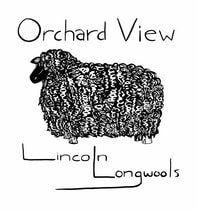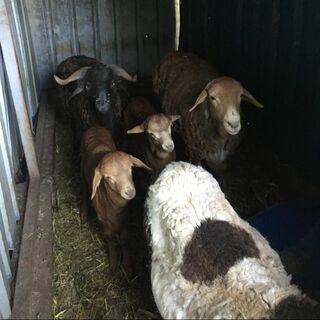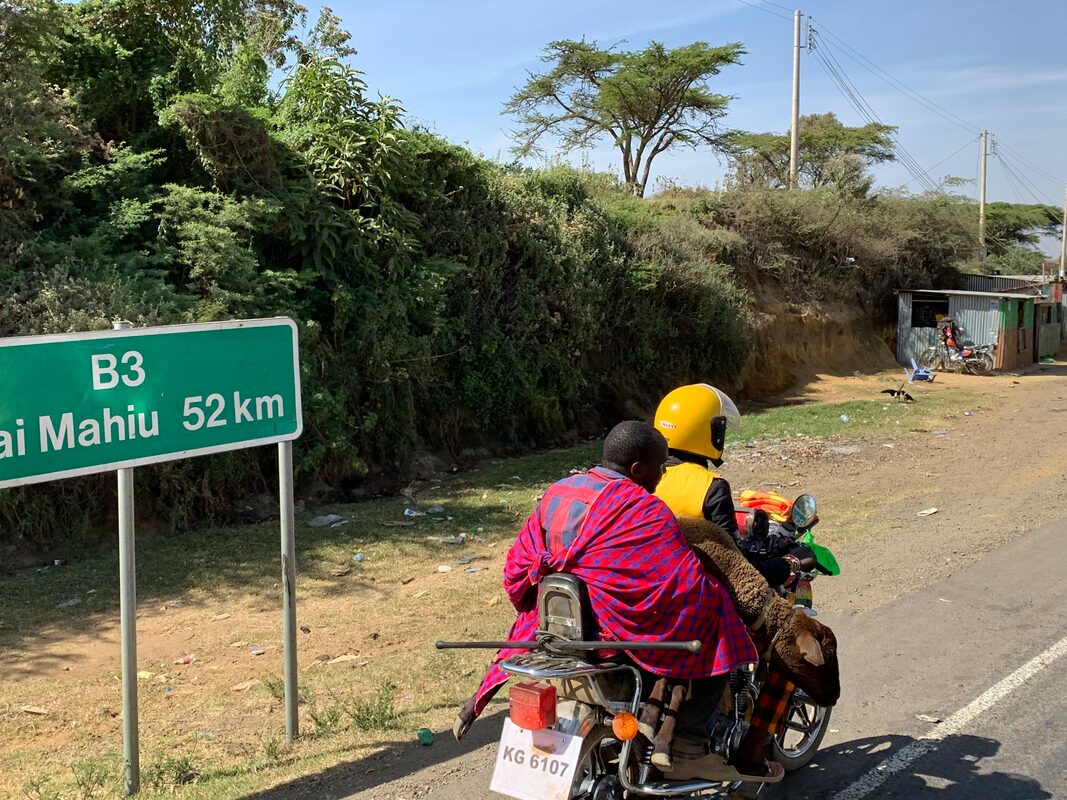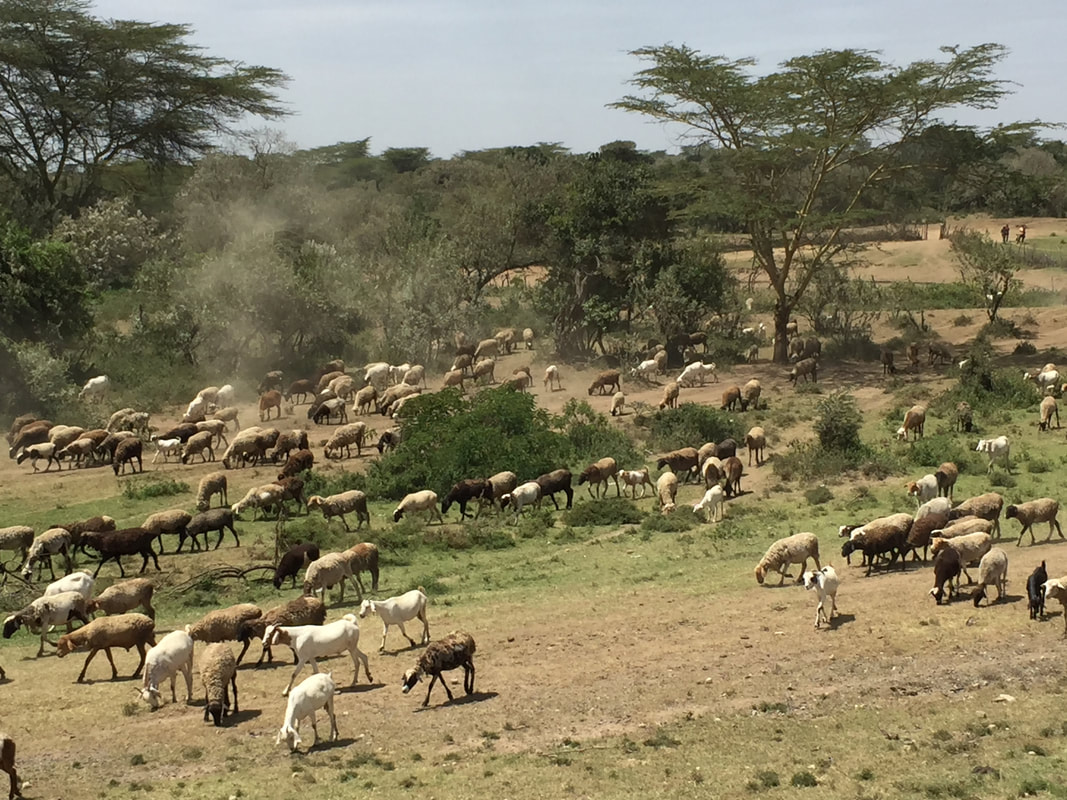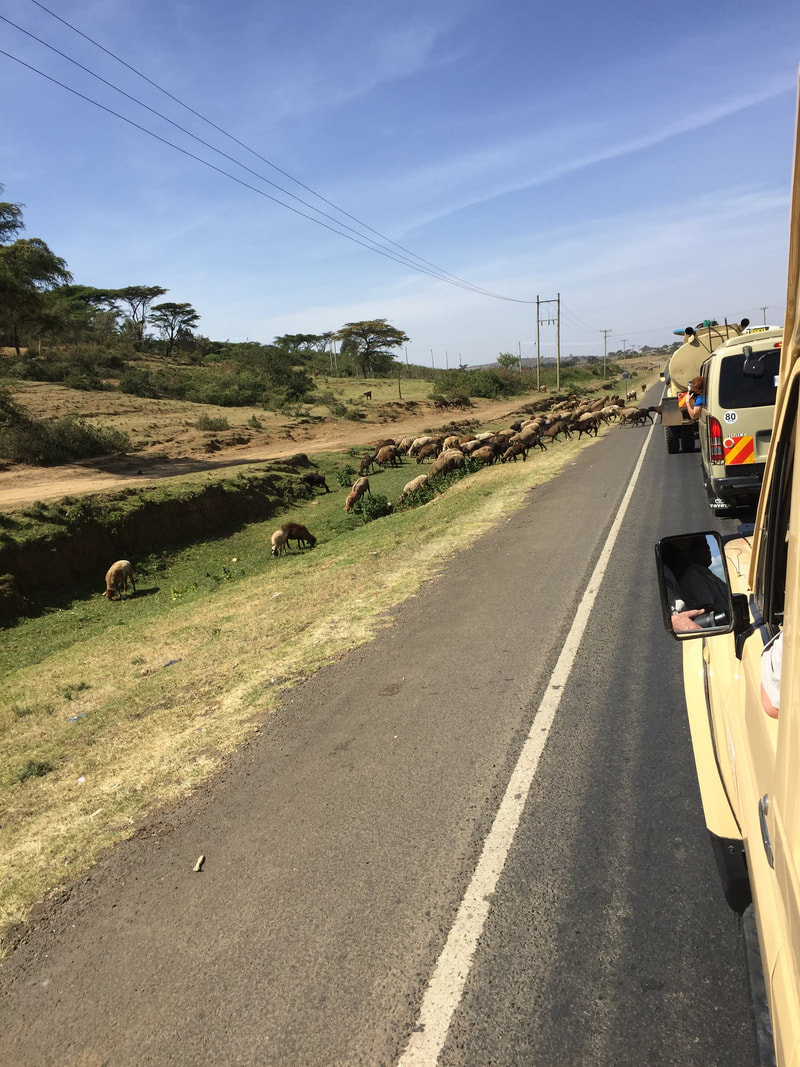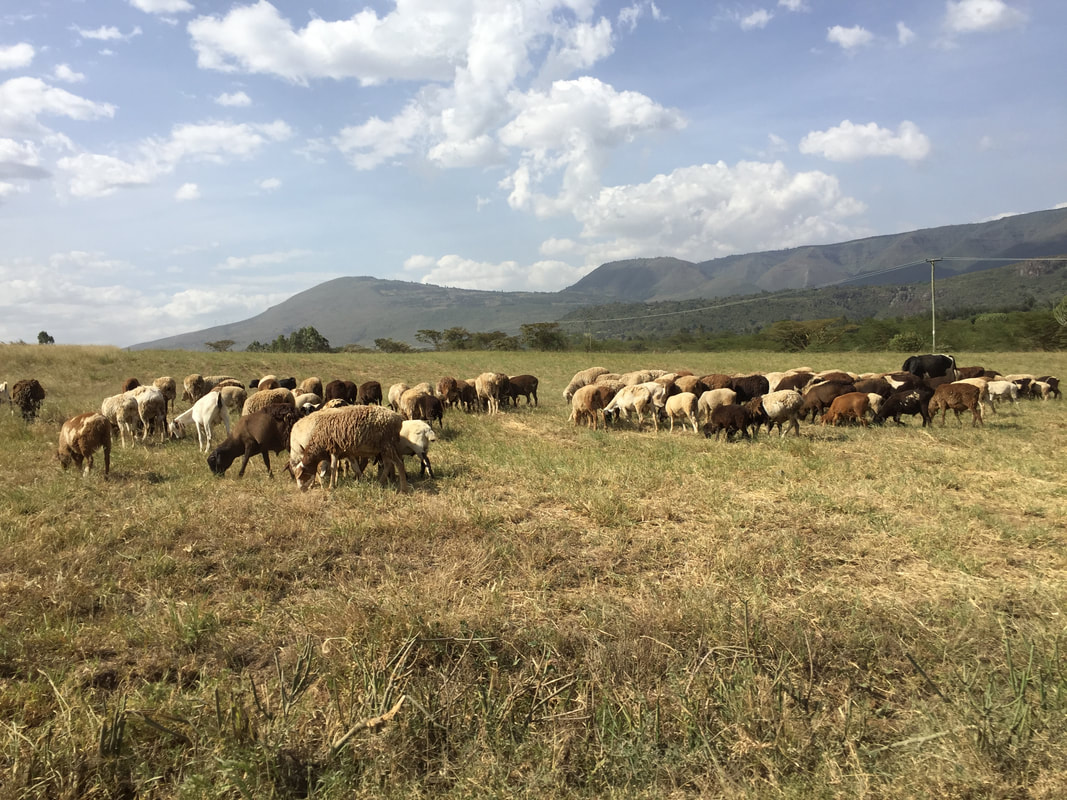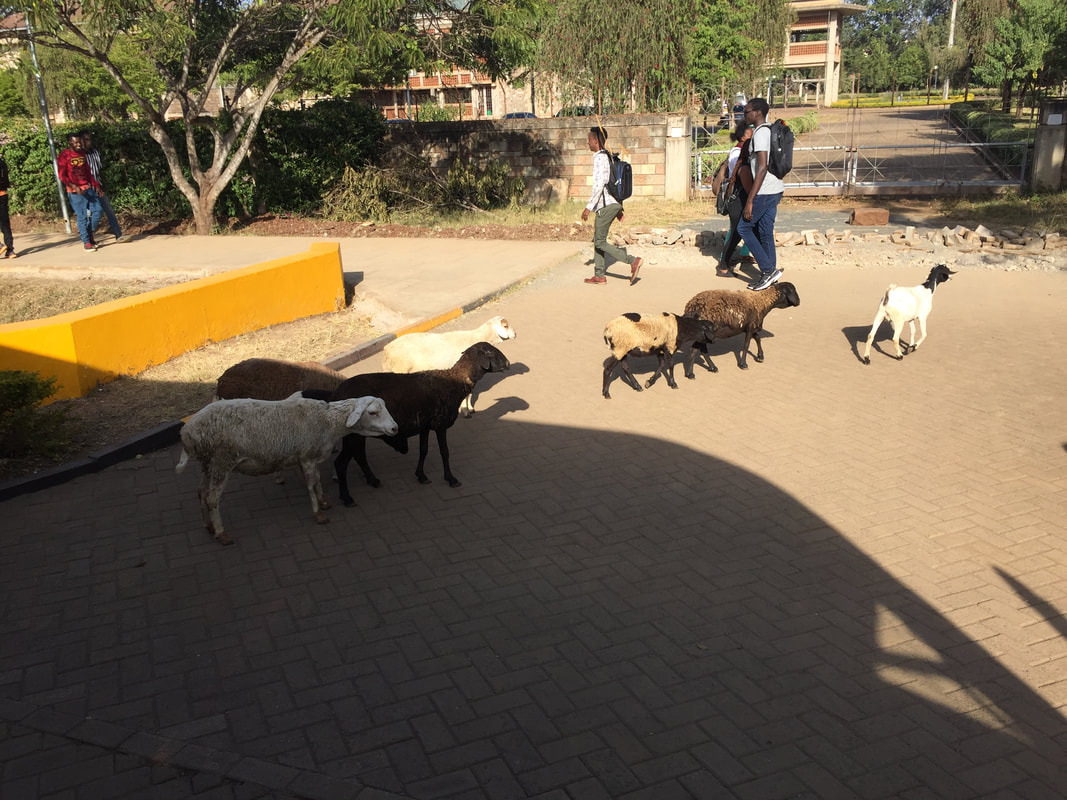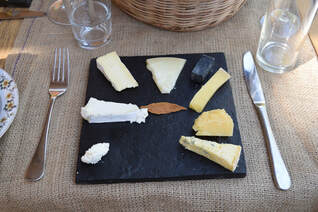 Cheese tasting at Brown's Cheese. The Red Maasai cheese is the black one in the top right. Cheese tasting at Brown's Cheese. The Red Maasai cheese is the black one in the top right. Last month, I had the opportunity to visit Kenya for ten days, as part of an agricultural leadership program called LEAD New York. This two year program ends with an international capstone trip to learn about agriculture and development in a developing country. While I could do a whole series on this trip, I wanted to highlight something I learned about and saw: the Red Maasai breed of sheep. First of all, I don't think I have ever seen so many cattle, sheep and goats in my life! They are everywhere: along the highway, in the medians, grazing everywhere you look whether you are in Nairobi or out in rural areas! As I am not nearly interested in cattle and goats as I am sheep, I wanted to share a little about this interesting heritage breed. The first time I heard of the Red Maasai sheep was during our second day, on a visit to Brown's Cheese. Delia and Andrew Stirling (both Cornell alumni!) are one of the only artisan cheese makers in East Africa. They source much of their milk from smallholder farms who have, on average, 2 cows and only a handful of sheep or goats. The are both passionate about working with NGOs to conduct research on how locals can improve the nutritional quality of their milk. The majority of these farmers live off of what they cannot sell, so helping to improve fat and protein content of the milk is beneficial for their families as well as cheese quality. In addition to working projects related to cattle nutrition, they are also interested in preserving the Red Maasai breed of sheep. The Red Maasai traditionally belong to the Maasai people, one of the largest tribes in Kenya and East Africa. But, they are currently on the verge of extinction, as they are routinely bred with Dorper sheep for better growth and conditioning. They are hoping that creating a cheese with Red Maasai milk will help promote this traditional breed. The cheese is inspired by mursik, a traditional Kenyan yogurt that is smoked, fermented, and preserved with charcoal. We had the opportunity to try the cheese. Similar in style to a pecorino, it is a unique blackish color from ash (made from banana leaves) and has a unique flavor as well. As much as I wanted to like it, it wasn't my favorite cheese I tried that day, but I love the mission behind it. Brown's has several Red Maasai sheep that live at their farm that they have for demonstration. I highly recommend the trip out to their farm for a lunch if you ever find yourself in the Nairobi area! After this day, I began to notice Red Maasai sheep and crosses everywhere. They are fatty tailed, hair breed sheep with a very distinctive and beautiful red color. They are known for their hardiness in arid conditions and have great internal parasite resistance. They are called Maasai sheep because they are traditionally raised by the Maasai people of East Africa who are pastoralists. It is a traditional belief that the Rain God entrusted livestock to the Maasai when the earth and the sky split, and according to legend the Red Maasai sheep was the first animal kept by the Maasai. Dorper sheep were introduced in the 1970's, so most of the sheep now are crosses. But, just like any other heritage breed, preserving the Red Maasai sheep is important for genetic diversity. Here is a collection of Red Maasai sheep photos of my trip. Enjoy!
0 Comments
Leave a Reply. |
AuthorEmmaline Long, main owner of Orchard View Farm, has a passion for Lincoln sheep and loves educating others about her breed and farm, She currently serves as the Vice President of the National Lincoln Breeders Association. Archives
October 2020
Categories
All
|
Orchard View Lincoln Longwools7617 S. Lake Rd., Bergen NY 14416 |
Contact UsStay Up-To-DateFollow our blog!
|
